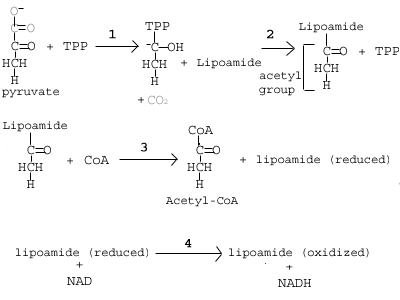Please wait while we process your payment
If you don't see it, please check your spam folder. Sometimes it can end up there.
If you don't see it, please check your spam folder. Sometimes it can end up there.
Please wait while we process your payment

By signing up you agree to our terms and privacy policy.
Don’t have an account? Subscribe now
Create Your Account
Sign up for your FREE 7-day trial
By signing up you agree to our terms and privacy policy.
Already have an account? Log in
Your Email
Choose Your Plan
Individual
Group Discount
Save over 50% with a SparkNotes PLUS Annual Plan!
 payment page
payment page
Purchasing SparkNotes PLUS for a group?
Get Annual Plans at a discount when you buy 2 or more!
Price
$24.99 $18.74 /subscription + tax
Subtotal $37.48 + tax
Save 25% on 2-49 accounts
Save 30% on 50-99 accounts
Want 100 or more? Contact us for a customized plan.
 payment page
payment page
Your Plan
Payment Details
Payment Summary
SparkNotes Plus
You'll be billed after your free trial ends.
7-Day Free Trial
Not Applicable
Renews July 12, 2025 July 5, 2025
Discounts (applied to next billing)
DUE NOW
US $0.00
SNPLUSROCKS20 | 20% Discount
This is not a valid promo code.
Discount Code (one code per order)
SparkNotes PLUS Annual Plan - Group Discount
Qty: 00
SparkNotes Plus subscription is $4.99/month or $24.99/year as selected above. The free trial period is the first 7 days of your subscription. TO CANCEL YOUR SUBSCRIPTION AND AVOID BEING CHARGED, YOU MUST CANCEL BEFORE THE END OF THE FREE TRIAL PERIOD. You may cancel your subscription on your Subscription and Billing page or contact Customer Support at custserv@bn.com. Your subscription will continue automatically once the free trial period is over. Free trial is available to new customers only.
Choose Your Plan
This site is protected by reCAPTCHA and the Google Privacy Policy and Terms of Service apply.
For the next 7 days, you'll have access to awesome PLUS stuff like AP English test prep, No Fear Shakespeare translations and audio, a note-taking tool, personalized dashboard, & much more!
You’ve successfully purchased a group discount. Your group members can use the joining link below to redeem their group membership. You'll also receive an email with the link.
Members will be prompted to log in or create an account to redeem their group membership.
Thanks for creating a SparkNotes account! Continue to start your free trial.
We're sorry, we could not create your account. SparkNotes PLUS is not available in your country. See what countries we’re in.
There was an error creating your account. Please check your payment details and try again.
Please wait while we process your payment

Your PLUS subscription has expired
Please wait while we process your payment
Please wait while we process your payment

Before the Citric Acid Cycle
After emerging from glycolysis, the two pyruvate are transported into the mitochondria. There, the pyruvate undergo a transition stage before entering the actual citric acid cycle. In this phase the pyruvate is transformed into acetyl-coenzyme A (acetyl-CoA), the starting product in the citric acid cycle. ;
2 Pyruvate + 2 coenzyme A + 2NAD+ -> 2 acetyl-CoA +2CO2 + 2 NADHNote: Students taking the AP biology exam do not need to know more about this transition process. Click here to skip to the next section.
Acetyl-CoA is a common product of carbohydrate, lipid, and protein breakdown. It consists of an acetyl group attached to a coenzyme A molecule. Coenzyme A is a large molecule that contains a molecule of ADP with two side chain groups stemming from its phosphate arms. Acetyl groups attach to the end of these side chains. In this way, the coenzyme A acts as a carrier of acetyl groups. When it is broken down by water, large amounts of energy are released, which, as we shall see, drive the citric acid cycle. The most common way that acetyl-CoA is derived in the metabolic pathway is with the help of the pyruvate dehydrogenase multienzyme complex.
The pyruvate dehydrogenase multienzyme is a complex of three distinct enzymes that together convert pyruvate into acetyl-CoA with the help of a molecule of coenzyme A and NAD. The mechanism for the formation of acetyl-CoA is complex, as seen below. Generally, in reaction 1, the enzyme pyruvate dehydrogenase pulls a carbon dioxide molecule off the pyruvate. This is accomplished with the help of a molecule called TPP that forms a temporary bond with the pyruvate molecule. The carbon dioxide removal reaction is similar to that of the yeast pyruvate decarboxylase in alcoholic fermentation.

In reaction 2, the enzyme dihydrolipoyl transacetylase helps to attach another temporary molecule called a lipoamide. With this bond formation, the TPP molecule from the first step is released leading to the formation of an acetyl group. In the third step, this lipoamide group is reduced and released as a molecule of CoA attacks the acetyl group. We now have acetyl-CoA. The third enzyme, dihydrolipoyl dehydrogenase, is responsible for restoring the lipoamide to its original, oxidized state so that it can be reused in the cycle in a fourth step. The molecule of NAD asserts itself at this point, helping to reoxidize the lipoamide.
At this point, we have acetyl-CoA and are ready to enter the citric acid cycle.
Please wait while we process your payment

